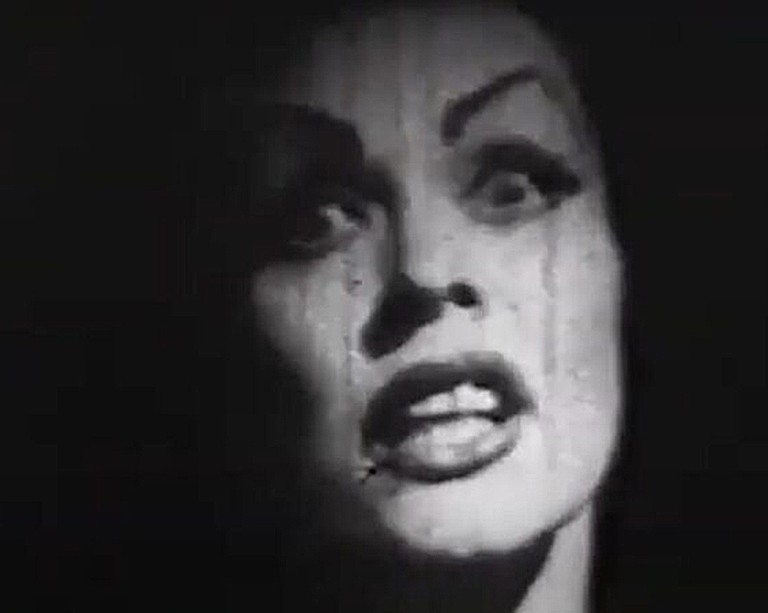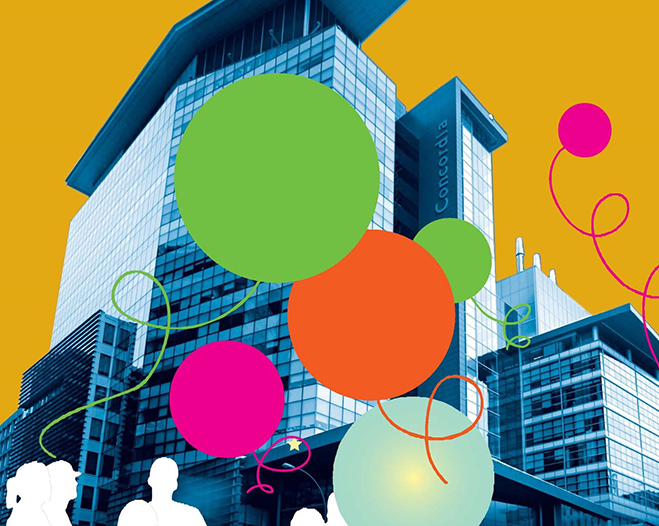The Riot Ballet brings politics, dance and gaming to the stage

How does an individual make the decision to act in defiance of overwhelming injustice?
Set against today’s current political climate of online misinformation, climate emergencies and partisan politics, the question of this participatory impulse lies at the heart of The Riot Ballet. The immersive multimedia theatre production and live-action game hybrid is set to premiere at Concordia this week.
Noah Drew, associate professor in Concordia’s Department of Theatre, is the production’s co-creator and sound designer and performs in the show. He says the original idea for the production was fuelled by artistic and scholarly questions around how riots happen: where that instinct comes from and what they mean to a city once they occur.
The production draws inspiration from many seemingly unlikely sources: the Stanley Cup riot in Vancouver in 2011, a Spanish circus, aerial footage of riot police training maneuvers and, of course, the escalating political rhetoric echoing across the media landscape.
 Emer O’Toole and Noah Drew
Emer O’Toole and Noah Drew
‘This is a city with a strong tradition of protest’
The Riot Ballet is an international collaboration between Jump Current Performance (Canada), Working Group Theatre (United States) and La Barracuda Carmela (Colombia).
Emer O’Toole, associate professor of performance studies in the School of Irish Studies, came on board as a co-creator in 2016, when a “prototype” performance was workshopped at Concordia.
“I think it’s incredibly valuable that we’re all bringing culturally bound experiences of protest and riot. We’re able to approach this from a number of different perspectives,” O’Toole says.
The project was put on the back burner until a grant allowed the international crew to reconvene, and the creative and politically charged environment of Montreal proved to be fertile ground for the production’s growth.
“This is a city with a strong tradition of protest. One of the things I knew about Montreal before I got here was the student protests and the strength of those movements,” O’Toole adds.
‘It looks almost balletic’
Across the varying sociopolitical contexts of protest explored during the research and creation process, one recurring element stood out: movement.
“There’s a choreography to how riot police are taught to cordon off certain members of a group and push them back. At each stage there’s a coordination of movement and helmets and shoulders,” O’Toole says. “It looks like a dance. It looks almost balletic.”
Drew adds that riots are active, and the relationship between activeness and passivity is something he finds very interesting.
“This relationship is explored in the nature of the immersive performance,” he says.
“Audiences are not just showing up and moving from one performance stage to the next — they’re implicated. They’re involved in a fictional world that starts from an online experience before the live event starts. That said, the audience won’t be called upon to perform or do anything beyond their individual comfort level.”
‘The immersive experience can bring a real feeling of empowerment’
The show begins prior to the live event with an initial online experience, which frames and shapes each audience member’s path through the performance. At the space, the audience travels through a series of enviroments and interactions with actors, the environment and fellow audience members.
Text, puzzles, video and audio installations colour the production’s fictional world and respond to the audience’s action — or inaction — affecting the ambience and the story.
“Eventually the audience is called upon to make a choice about their relationship to the intensifying riot experience,” Drew explains. “Their physical choice affects ultimately how the show will evolve and conclude.”
Elisabeth Nyveen (BFA 19), a graduate of Concordia’s Design for the Theatre Program, is one of The Riot Ballet’s stage manager. They were drawn to the production by their interest in the intersection between theatre and gaming.
“I think the immersive experience brings a real feeling of empowerment and agency to those who are going to experience it. But it’s also a wake-up call for audiences; this is happening and you are a part of it,” Nyveen says.
‘A whole wealth of expertise here at Concordia’
The Riot Ballet has received ongoing support from the Department of Theatre and the Technoculture, Art and Games (TAG) Research Centre in the Milieux Institute for Arts, Culture and Technology, which facilitated the multimedia show’s many tech-driven elements.
“There’s a whole wealth of expertise here at Concordia that we’ve drawn on and tried to incorporate into the production,” O’Toole says.
Despite the heaviness of the subject matter, she hopes the show will be a fun and eye-opening experience for audiences.
“I think allowing people to play in a safe way with thematics that can be quite dangerous can be really productive and can create answers and perspectives that didn’t exist before,” she adds.
“We said from the outset that we didn’t want to be didactic, we didn’t want to be preachy, because so often political theatre is. We’re as confused as everyone else. We don’t know the answers. We’re exploring these themes and asking people to explore them with us.”
The Riot Ballet runs from August 21 to 25 at Concordia’s John Molson (MB) Building (1450 Guy St.). Discounted tickets are available for students, artists, activists and law enforcement personnel.


